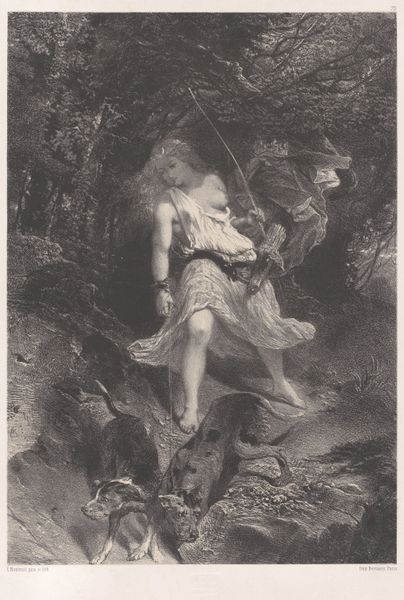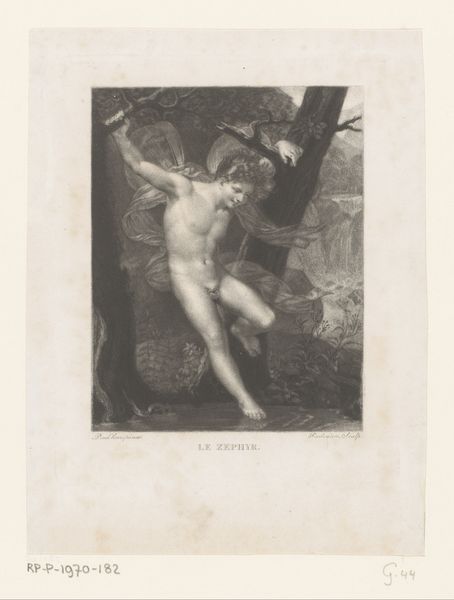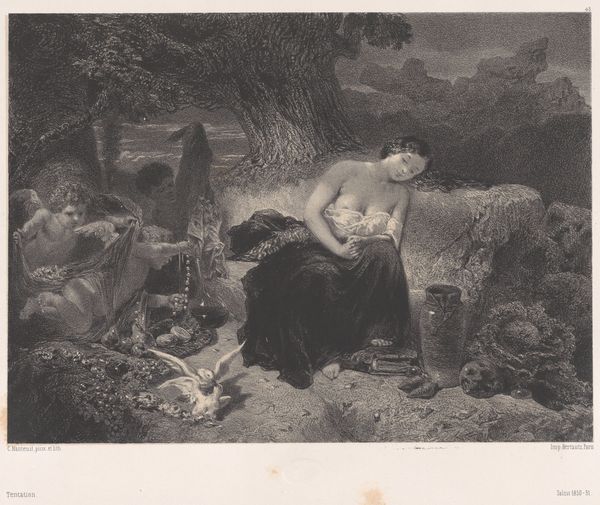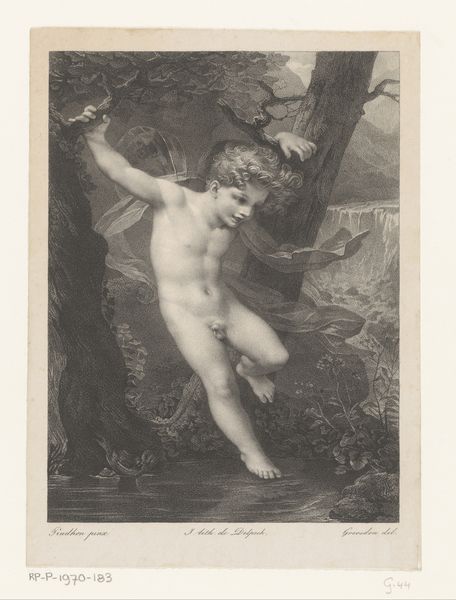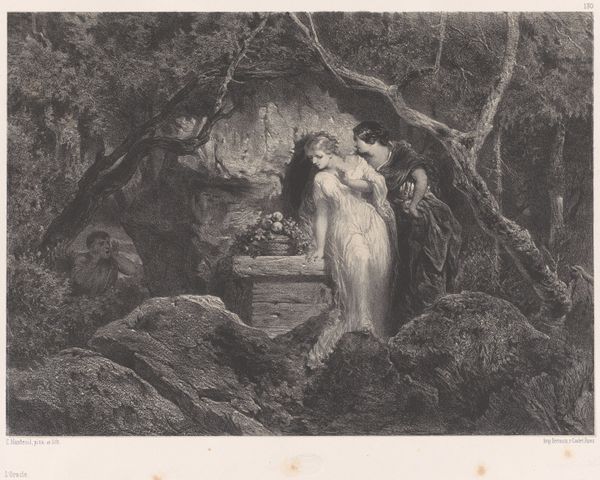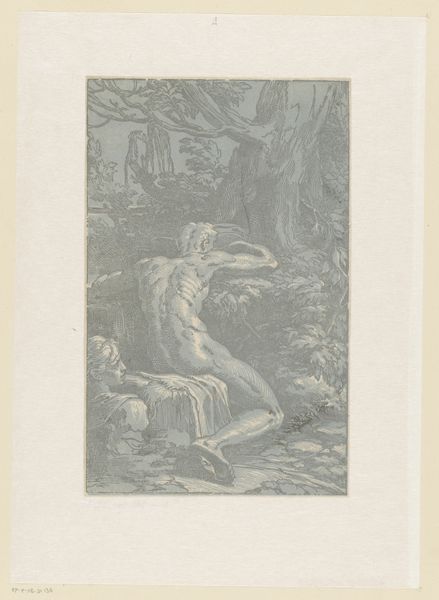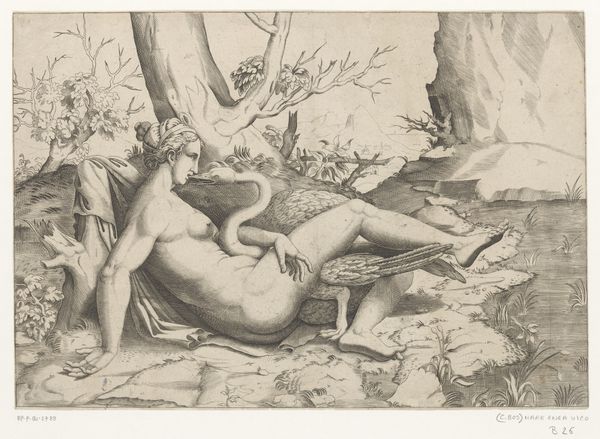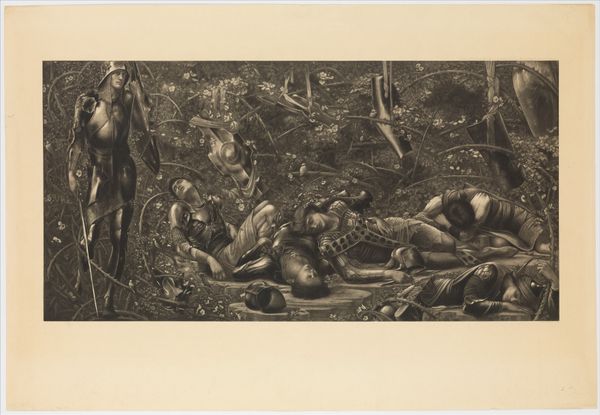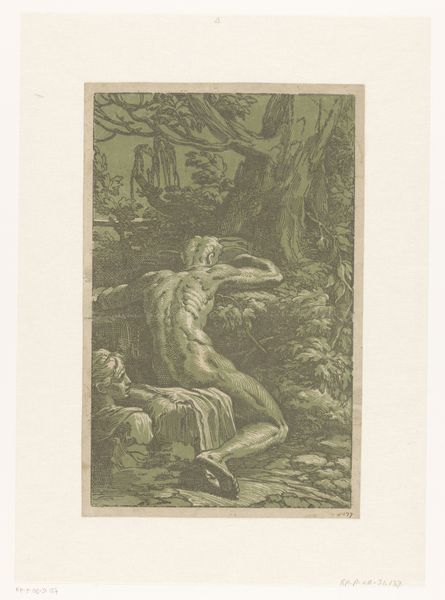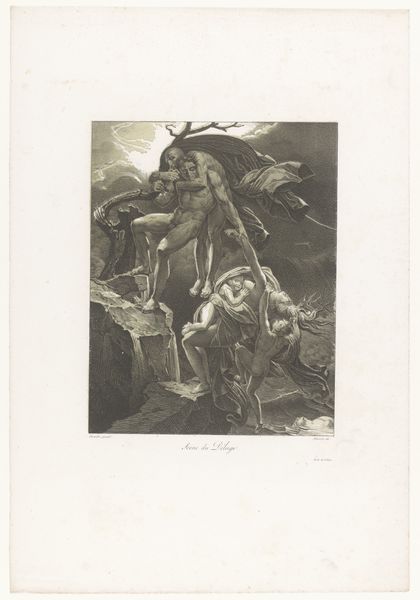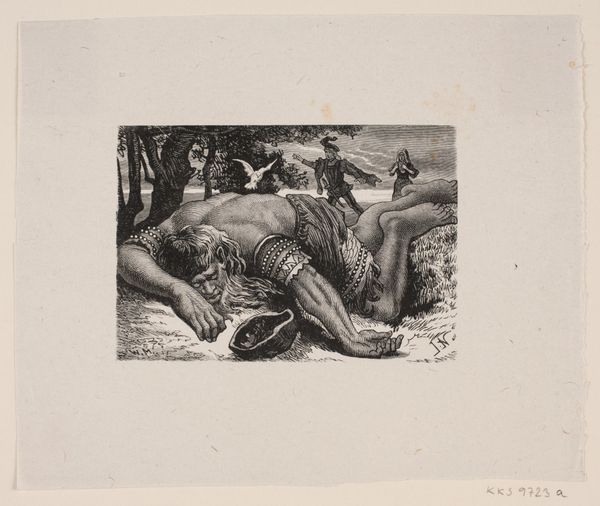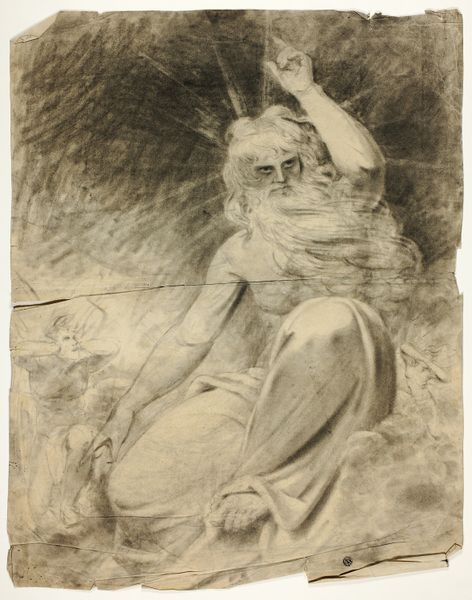
drawing, print, etching, engraving
#
pencil drawn
#
drawing
# print
#
etching
#
pencil sketch
#
charcoal drawing
#
figuration
#
pencil drawing
#
romanticism
#
pencil work
#
history-painting
#
nude
#
engraving
Dimensions: Sheet: 12 3/16 × 17 5/16 in. (30.9 × 44 cm)
Copyright: Public Domain
Célestin Nanteuil created this print of Clorinde in the 19th century, using a steel engraving technique. Engraving is a laborious intaglio process, where the artist manually carves lines into a metal plate, in this case steel, using a tool called a burin. Ink is then applied to the plate, and the surface wiped clean, leaving ink only in the engraved lines. Finally, paper is pressed against the plate with considerable force to pick up the ink, resulting in a print. Look closely, and you’ll see that every mark is a testament to Nanteuil’s hand. The fineness of the lines, achieved with great skill and time, allows for a high level of detail and tonal variation, which is evident in the texture of the rock, the softness of Clorinde's skin, and the depth of the forest. Engraving was traditionally used for reproduction, but here Nanteuil uses it to create an original work of art. Appreciating the labor-intensive process and materiality of engraving helps us to understand its cultural value and significance, and prompts us to reconsider the divide between fine art and craft.
Comments
No comments
Be the first to comment and join the conversation on the ultimate creative platform.
